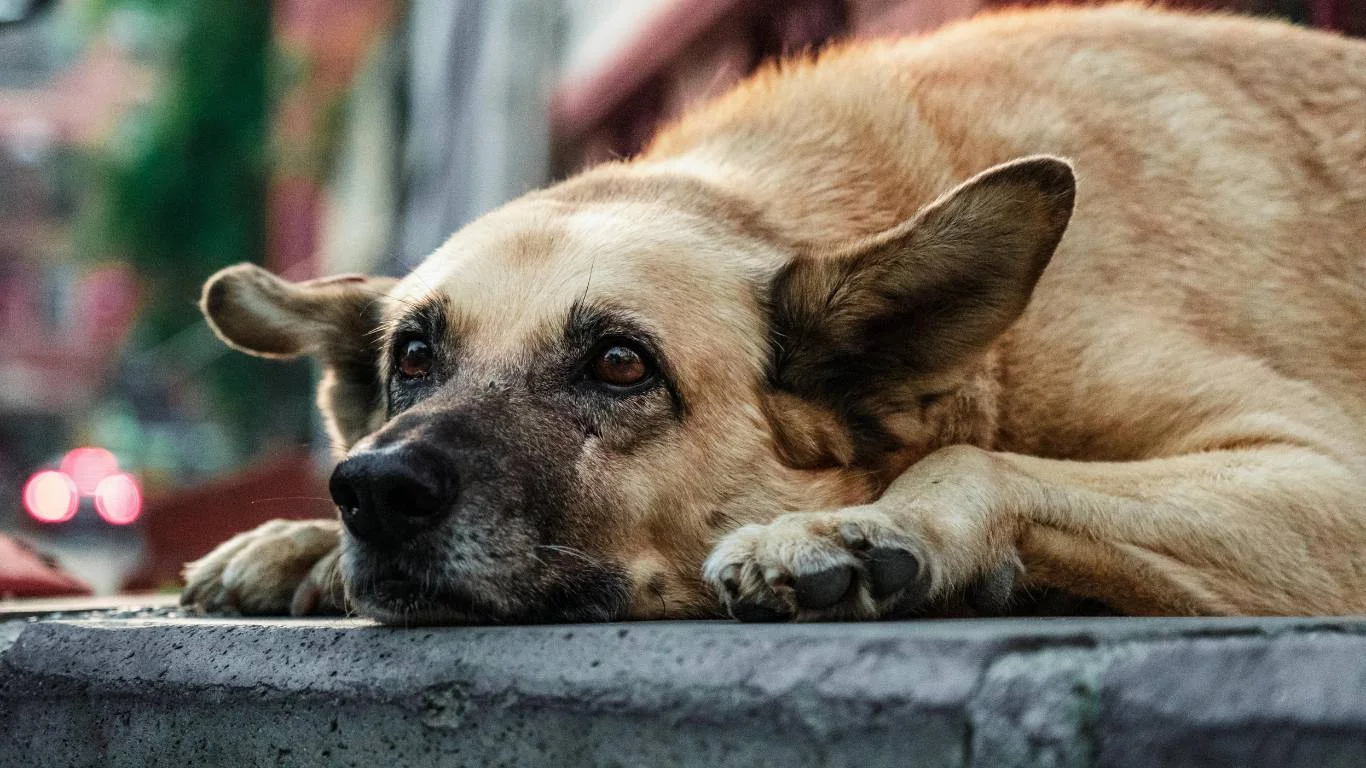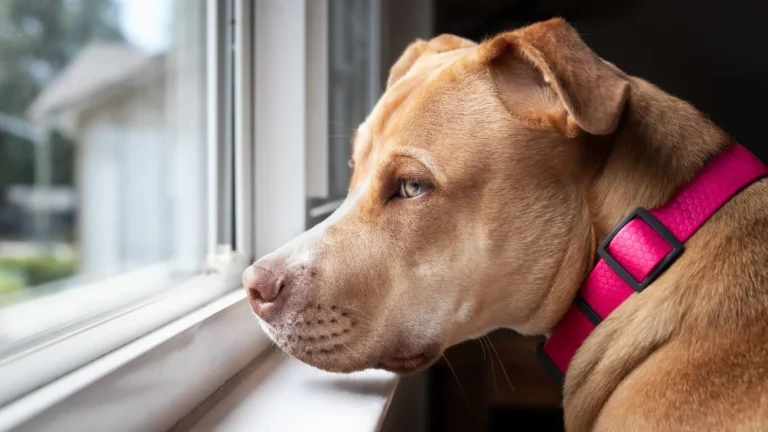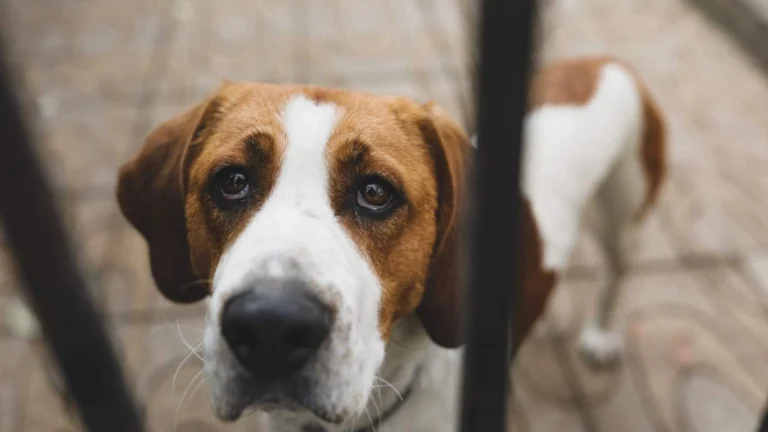What to Do if Your Dog Has a Swollen Face: Effective Treatment Tips
If you’ve noticed your dog’s face is suddenly swollen, it can be alarming and distressing for both you and your pet. As a pet nutritionist and care expert, I know how concerning it can be when a furry friend isn’t feeling their best. Swelling in your dog’s face can happen for a variety of reasons, and it’s important to act quickly and responsibly to determine the cause and address it appropriately. In this post, we’ll discuss what to do if your dog has a swollen face, how to identify the potential causes, and when it’s time to seek veterinary help.
Understanding Swelling in Dogs’ Faces
When your dog has a swollen face, it’s often a result of an underlying issue that requires attention. While a bit of puffiness might seem harmless, it could signal something more serious. The causes of facial swelling in dogs can range from something as simple as an insect bite to more complex issues like infections, abscesses, or even allergies. As a pet care expert, I’ve seen many cases, and I can tell you that understanding the reason behind the swelling is key to getting the right treatment for your pet.

Common Causes of Swollen Faces in Dogs
There are several common causes that might lead to your dog’s face swelling. Some of these are relatively harmless, while others might require more immediate care. Let’s dive into a few of the most frequent causes of facial swelling in dogs:
- Insect Bites and Stings: This is one of the most common causes of a sudden swollen face. Dogs love to explore, and an accidental encounter with a bee or wasp can result in swelling around the eyes, mouth, or nose.
- Allergic Reactions: Just like people, dogs can suffer from allergic reactions. Whether it’s food, pollen, or something in their environment, an allergic reaction can cause swelling. These types of reactions may come with other symptoms like itching or hives.
- Abscesses: If your dog has been chewing on something sharp, such as a bone or stick, or has had a recent injury, an abscess can form. These are pockets of infection under the skin and can cause noticeable swelling.
- Infections: Bacterial or viral infections in the skin or gums can also cause swelling. Dental issues, such as infected teeth or gums, are common culprits, particularly in older dogs.
- Trauma or Injury: A bump or injury to the face, whether from a fall, a fight with another dog, or even a car accident, can cause swelling. The body’s natural response to trauma is inflammation, leading to swelling around the affected area.
What to Do If Your Dog’s Face Is Swollen
Now that you know some of the most common causes of facial swelling, let’s talk about what you should do if you notice your dog’s face is puffed up.
Stay Calm and Assess the Situation
First and foremost, remain calm. I know it can be stressful, but staying level-headed will help you make the right decisions for your dog. Begin by gently inspecting the affected area. If the swelling seems localized to a specific spot, such as near an eye or the muzzle, it could be an insect bite or injury. If the swelling is more generalized across the face, this might suggest an allergic reaction, infection, or something more serious. Here are a few things to look for:
- Is the swelling painful? Gently press around the swollen area. If your dog winces or reacts with pain, it could be an abscess or injury.
- Is there any discharge? Check for any discharge from the eyes, nose, or mouth. Discharge, particularly if it’s yellow or green, could point to an infection.
- Are other symptoms present? If your dog is also vomiting, having difficulty breathing, or acting lethargic, these could be signs of a more serious issue like an allergic reaction or an infection.

Consider the Timing of the Swelling
The timing of the swelling can provide valuable clues. If the swelling appears suddenly and gets worse rapidly, it’s essential to act quickly. If your dog’s face swells gradually over a few hours, this might indicate a reaction to something like an insect bite or a mild allergic reaction, which may be treatable at home with the right medication. However, if the swelling is severe or has developed over a longer period, it could point to an infection or an abscess, which requires veterinary attention.
When to Seek Veterinary Help
While it’s natural to want to solve the problem on your own, there are certain situations where veterinary care is necessary. Here are a few scenarios when you should call your vet or go to the emergency clinic:
- If the swelling affects your dog’s ability to breathe: Swelling around the face, particularly near the throat or jaw, can interfere with breathing. If you notice labored or rapid breathing, it’s time to get to the vet right away.
- If the swelling doesn’t improve within 24 hours: If your dog’s face is still swollen after a day or two, even with home care (such as antihistamines for allergies), it’s best to have a vet examine your dog.
- If your dog shows other signs of illness: Symptoms like vomiting, diarrhea, lethargy, or excessive drooling, combined with facial swelling, could indicate a more serious condition that requires medical intervention.

In the Next Section: Treatment Options
In the next section, we’ll dive deeper into the treatments available for swollen faces in dogs, including home remedies and when professional care is necessary. But for now, remember, your dog’s swelling could be a result of something minor, or it could be a sign of a more serious issue. Always err on the side of caution, and if you’re ever in doubt, don’t hesitate to reach out to your veterinarian for guidance.
Treating Your Dog’s Swollen Face: Home Remedies and Vet Care
Now that you have a clearer idea of what might be causing your dog’s face to swell, it’s time to talk about how to treat it. In some cases, you can manage mild swelling at home with a few simple remedies, but other times, especially if the swelling is severe or accompanied by serious symptoms, it’s best to seek professional care. Let’s go over both options and explore how you can help your dog feel better quickly and safely.

At-Home Treatment for Minor Swelling
If the swelling is mild and not affecting your dog’s breathing or behavior, you can try some home remedies to relieve the symptoms. I’ve helped many pet owners deal with these types of situations, and the good news is that with the right approach, you can often help your dog feel more comfortable without needing to rush to the vet. Here are a few home treatments that can help reduce swelling and make your dog feel better:
1. Cold Compress
One of the easiest and most effective ways to reduce swelling is by applying a cold compress to the affected area. The cold helps constrict blood vessels, which can reduce inflammation and bring down the swelling. Simply take a clean cloth or towel, soak it in cold water or use ice wrapped in a towel, and gently apply it to your dog’s face for 10-15 minutes at a time. Repeat this a few times a day as needed. Be careful not to make it too cold or leave it on for too long—this could cause discomfort for your dog. A few short sessions of cold treatment can work wonders!
2. Antihistamines for Allergies
If you suspect the swelling is due to an allergic reaction, such as an insect sting or an environmental allergen, antihistamines may help. However, it’s crucial to consult with your vet before giving your dog any medication. I’ve seen many cases where an antihistamine like Benadryl helped ease the swelling and other allergy symptoms in dogs, but the correct dosage can vary based on your dog’s size and health. Always check with your vet first to ensure it’s safe for your pet.
3. Hydration and Monitoring
Keeping your dog hydrated is vital in any health situation, especially when they’re dealing with swelling. Make sure your dog has access to fresh water at all times. Swelling can sometimes make your dog feel more lethargic, and dehydration can worsen their condition. Offering water regularly will help them stay comfortable while you monitor the situation. Keep a close eye on their condition, noting whether the swelling is improving or worsening over time. If there’s no improvement within 24-48 hours, it’s time to reach out to your vet.
When to Head to the Vet: Professional Care Is Necessary
In some cases, home remedies just won’t cut it, and you’ll need to consult with a veterinarian to properly address the issue. As a pet care expert, I’ve worked with many dog owners who thought they could manage a swelling issue on their own, only to realize that professional care was necessary. Here are some situations when you should definitely seek veterinary assistance:
1. Severe or Rapid Swelling
If the swelling seems to appear suddenly and grow rapidly, don’t wait too long to seek professional help. This could be a sign of an infection or allergic reaction that requires immediate treatment, such as steroids or even epinephrine in cases of anaphylaxis (a severe allergic reaction). Swelling that happens quickly can affect vital areas, like the throat, making it difficult for your dog to breathe. In these cases, time is of the essence.
2. Difficulty Breathing or Drooling
If the swelling is severe enough that it affects your dog’s ability to breathe or swallow, it’s a serious situation. Difficulty breathing can be a sign that the swelling is constricting the airway, making it harder for your dog to get oxygen. If your dog is drooling excessively, it might indicate pain or difficulty swallowing, which can be caused by infection, injury, or swelling around the mouth and throat. Both of these symptoms require immediate veterinary attention.

3. Signs of Infection
Facial swelling could also be caused by an infection, whether from an abscess, dental issue, or trauma. If your dog’s face is warm to the touch, and there’s any discharge—particularly yellow or green—it’s a clear sign of infection. In these cases, the veterinarian will need to examine the area, drain any pus, and potentially prescribe antibiotics to treat the infection. In some cases, surgery may even be required to drain an abscess. If the swelling is accompanied by fever, lethargy, or loss of appetite, it’s definitely time to head to the vet.
4. Lack of Improvement with Home Treatment
As mentioned earlier, if your dog’s swelling doesn’t improve within 24-48 hours despite at-home treatment, it’s time to visit the vet. Swelling that doesn’t subside could indicate a more serious issue, such as a systemic infection or an allergic reaction that’s not responding to over-the-counter antihistamines. When in doubt, always trust your instincts as a pet owner and get your dog checked by a professional.

Next Steps After Treatment
Once your dog has been treated for the swelling, whether through home remedies or veterinary care, it’s important to follow the post-treatment instructions carefully. If your dog was prescribed antibiotics or steroids, be sure to complete the full course as directed, even if they start feeling better before the medication runs out. I can’t stress enough how crucial it is to finish the entire treatment to avoid a recurrence or further complications.
Additionally, keep an eye on the affected area, and continue to monitor your dog for any new or unusual symptoms. It’s always better to be cautious and reach out to your vet if something doesn’t feel right. Regular follow-up visits may be needed depending on the severity of the condition, especially if your dog has an underlying health issue contributing to the swelling.
Preventing Facial Swelling in Dogs: Tips and Strategies
As a pet care expert, I’m often asked how to prevent common issues like facial swelling in dogs. While not all cases of facial swelling are entirely preventable, there are several steps you can take to reduce the risk of your dog experiencing this problem. Preventing swelling not only helps avoid discomfort for your dog but also helps keep you from unnecessary trips to the vet. Let’s dive into some practical strategies to help reduce the chances of your dog’s face swelling up in the first place.

1. Keep Your Dog’s Environment Safe from Allergens
Allergies are a major contributor to facial swelling in dogs. Whether it’s environmental allergens like pollen or more specific triggers like dust mites, your dog can be susceptible to allergic reactions that cause swelling, particularly around their face. As someone who’s seen countless allergic reactions in pets, one of the best ways to prevent swelling is to minimize your dog’s exposure to known allergens.
If you know your dog has a sensitivity to something, like certain plants, dust, or even certain foods, try to limit their exposure. Keeping windows closed during allergy season, cleaning your home regularly, and using air purifiers can help reduce the amount of allergens your dog is exposed to. If you’re unsure of what might be triggering your dog’s allergies, it’s a good idea to consult with your vet about allergy testing to pinpoint potential causes.
2. Avoiding Insect Bites and Stings
Insect bites and stings are a leading cause of facial swelling in dogs, especially in the summer months when bugs are more active. Whether it’s a bee sting or a mosquito bite, these insects can cause swelling and discomfort. While it’s not always possible to prevent every bite, there are steps you can take to minimize your dog’s exposure to pests.
Consider using natural insect repellents that are safe for dogs, especially if you spend a lot of time outdoors. Keep your dog on a leash when walking in areas with tall grass or dense vegetation, as these are common hiding spots for insects. Additionally, checking your dog regularly for ticks and other parasites can help you catch issues early. If you do find a tick, be sure to remove it immediately with a proper tick removal tool to avoid infection.
3. Regular Vet Check-Ups for Early Detection
Routine veterinary visits are one of the most effective ways to catch underlying health issues before they lead to severe symptoms like swelling. Dogs are masters at hiding pain, and sometimes what looks like minor swelling could be a sign of a more serious condition, such as an infection, abscess, or dental issue. Regular check-ups with your vet can help catch these problems early and prevent complications that might lead to swelling.
In addition to standard check-ups, be sure to keep up with your dog’s vaccinations and preventive care (such as flea and tick treatments). Your vet can guide you on the best schedule for these visits based on your dog’s breed, age, and health needs. Early detection of infections, dental problems, or allergies can make a big difference in preventing more severe swelling or health issues down the road.
4. Keeping Your Dog’s Oral Health in Check
Dental health is something that often gets overlooked when it comes to facial swelling. But believe me, an abscess or infected tooth can lead to significant swelling, especially around the face and mouth area. I’ve seen plenty of cases where dogs with untreated dental issues develop swelling in their cheeks, around the eyes, or under the jaw.
To prevent this, be proactive about your dog’s dental health. Brush your dog’s teeth regularly with dog-safe toothpaste (never human toothpaste, as it can be toxic to dogs) and consider providing dental chews or toys to help keep their teeth clean. If you notice any signs of gum disease, such as bad breath, bleeding gums, or excessive drooling, contact your vet for an evaluation. Regular dental check-ups can help prevent swelling caused by infections in the mouth.

Signs You Should Never Ignore
While we’ve discussed the steps you can take to prevent facial swelling, it’s equally important to recognize the warning signs that something may be seriously wrong. As a pet nutritionist and care expert, I always tell pet owners that knowing when to act is just as important as knowing what to do. If you notice any of these signs along with facial swelling, it’s time to call your vet immediately:
- Excessive Lethargy: If your dog seems unusually tired or unresponsive, this could indicate a more serious issue, such as an infection or allergic reaction.
- Loss of Appetite or Difficulty Eating: If your dog is having trouble eating, drinking, or swallowing, this could be due to facial swelling affecting their mouth or throat. It’s especially concerning if this is accompanied by drooling or vomiting.
- Rapid Breathing: Difficulty breathing or increased respiratory rate can be a sign of swelling around the throat or airway, which could be life-threatening. If this happens, get to the vet immediately.
- Fever: A high temperature along with swelling could indicate an infection that requires prompt treatment.
References
If you’d like to learn more about the causes and treatment options for facial swelling in dogs, there are plenty of reliable sources to explore. Here are a few that I personally recommend:
- Google – For general searches on dog health and common conditions like facial swelling.
- American Kennel Club (AKC) – Offers detailed guides on various dog health issues.
- American Veterinary Medical Association (AVMA) – An excellent resource for pet owners looking to understand medical conditions and best care practices.
Disclaimer
The information provided in this article is for informational purposes only and is not intended to replace professional veterinary advice. Always consult with a licensed veterinarian if you are concerned about your dog’s health or if they exhibit symptoms like swelling. The advice offered is based on my personal experience as a pet care expert, but each dog’s health situation is unique. When in doubt, trust your veterinarian to guide you through the best treatment options for your pet.






